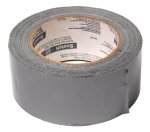Mr.Chips
Member
- Location
- Stockbridge, MA USA
Doing a my first kitchen remodel, (all industrial work before) opened up wall to find water pipes within 7" of proposed new (old work) outlet. Is this OK with NEC? Same stud space, running flex not Romex... 100 year old Colonial, no fire stops...


